the largest estate jeweler in New England | 6 locations | 5 Days a week live shopping on instagram
the largest estate jeweler in New England | 6 locations | 5 Days a week live shopping on instagram
the largest estate jeweler in New England | 6 locations | 5 Days a week live shopping on instagram
the largest estate jeweler in New England | 6 locations | 5 Days a week live shopping on instagram
Add description, images, menus and links to your mega menu
A column with no settings can be used as a spacer
Link to your collections, sales and even external links
Add up to five columns
Add description, images, menus and links to your mega menu
A column with no settings can be used as a spacer
Link to your collections, sales and even external links
Add up to five columns
August 15, 2019 4 min read
Wedding bands are often a demonstration of form meeting function. The best wedding bands are both beautiful and secure, designed with everyday wear in mind. With diamond wedding bands, you’ll want to consider which styles you find aesthetically pleasing, along with which styles will keep the gems protected. Some settings are more secure than others, so it’s worth doing a bit of research to find the right setting to match your lifestyle.
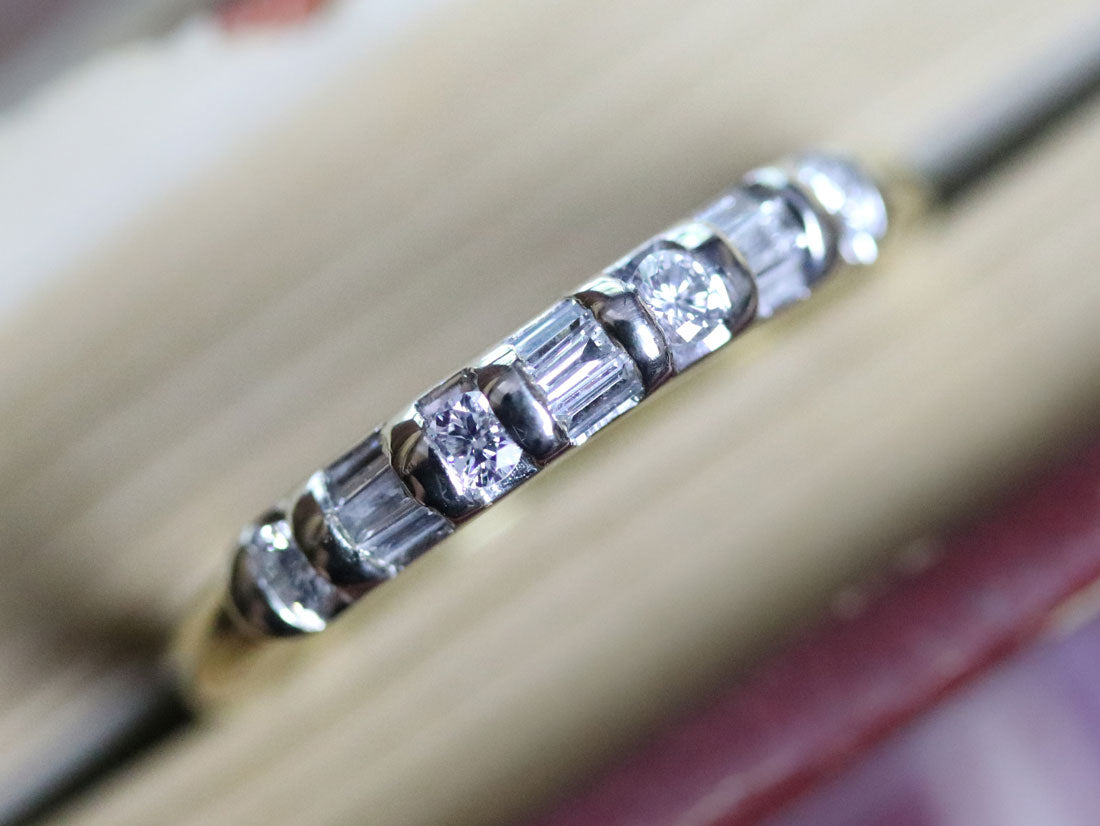
Bar settings keep the diamonds in place with a rectangle of metal (or a bar) in between each stone, creating a kind of geometric pattern on the band. Diamonds in bar settings sit within the band and are protected on two sides by the bars. Bar set diamond wedding bands offer good protection against the knocks of everyday wear, however the design does minimize the look of the diamonds in terms of size. If you need a wedding band that can be worn everyday, and want a less feminine look, the bold geometry of bar set diamond wedding bands may be perfect for you.
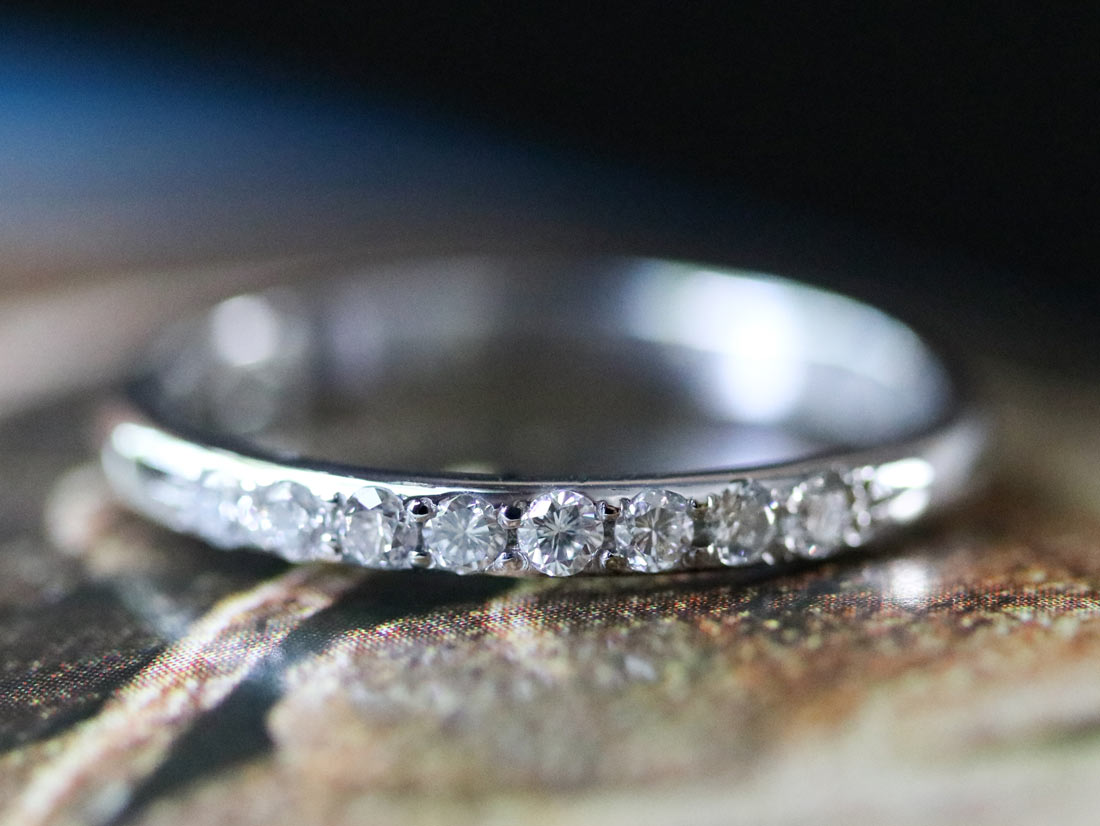
Bead settings, also called surface prong settings, are a wedding band style where the diamond sits in the metal and is held in place by two or more beads of metal. These beads are usually subtle, and can give a nice play of light around the diamonds. Bead set wedding bands offer a good amount of protection for the diamonds, because the sides of the gems are completely surrounded by metal. If you want to see the full diameter of the diamond, but need a design with a little more protection, bead set diamond wedding bands are a great choice.
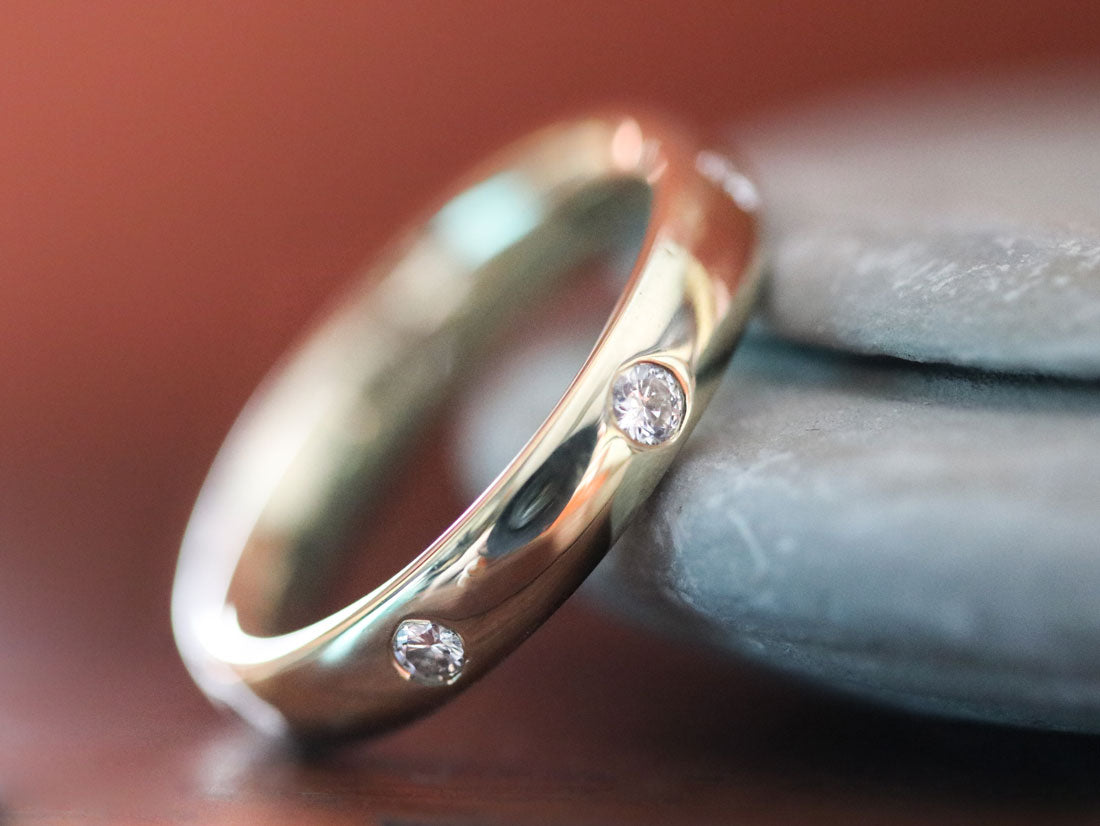
Flush settings, also called gypsy settings, completely surround the stone, which sits within the band itself, with the top flush with the metal. This setting offers exceptional security for the diamond, as it is very unlikely to come loose, and is protected on all sides from any knocks that might occur. Because the diamonds sit flush with the surface of the band, they are prevented from catching on anything. Similar to flush settings, bezel settings completely surround the stone and offer great protection. Instead of the diamond sitting in the band, bezel settings create a kind of frame for the stone, which creates an attractive pattern. If you like a more minimalist or contemporary look, and want maximum protection for your diamonds, flush set diamond wedding bands and bezel set diamond wedding bands are excellent choices.
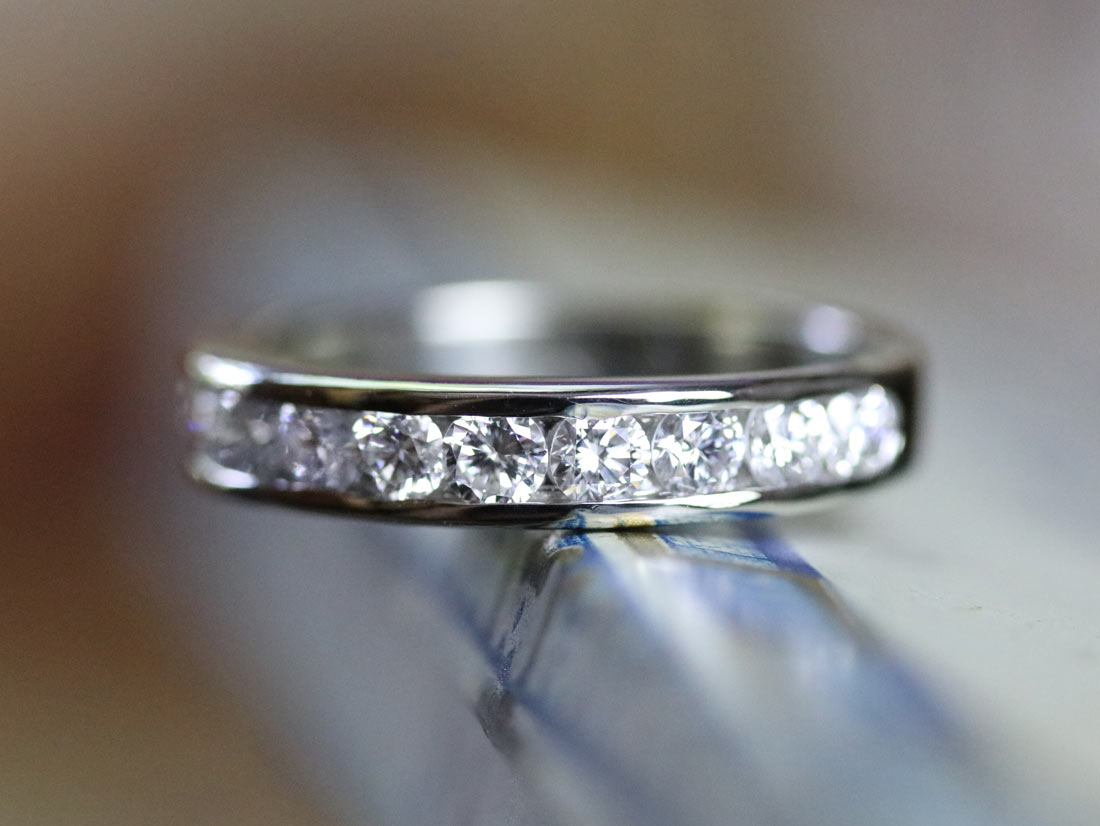
Channel settings are another style that offers very good protection for the stones. Channel settings have thick borders on either side of the diamonds that hold them all in a line around the band. The diamonds sit below the surface of the band, held in place on two sides. The overall look of channel set diamond wedding bands is sleek and modern. There are no prongs or raised elements that can snag, and the diamonds are well protected for everyday wear.
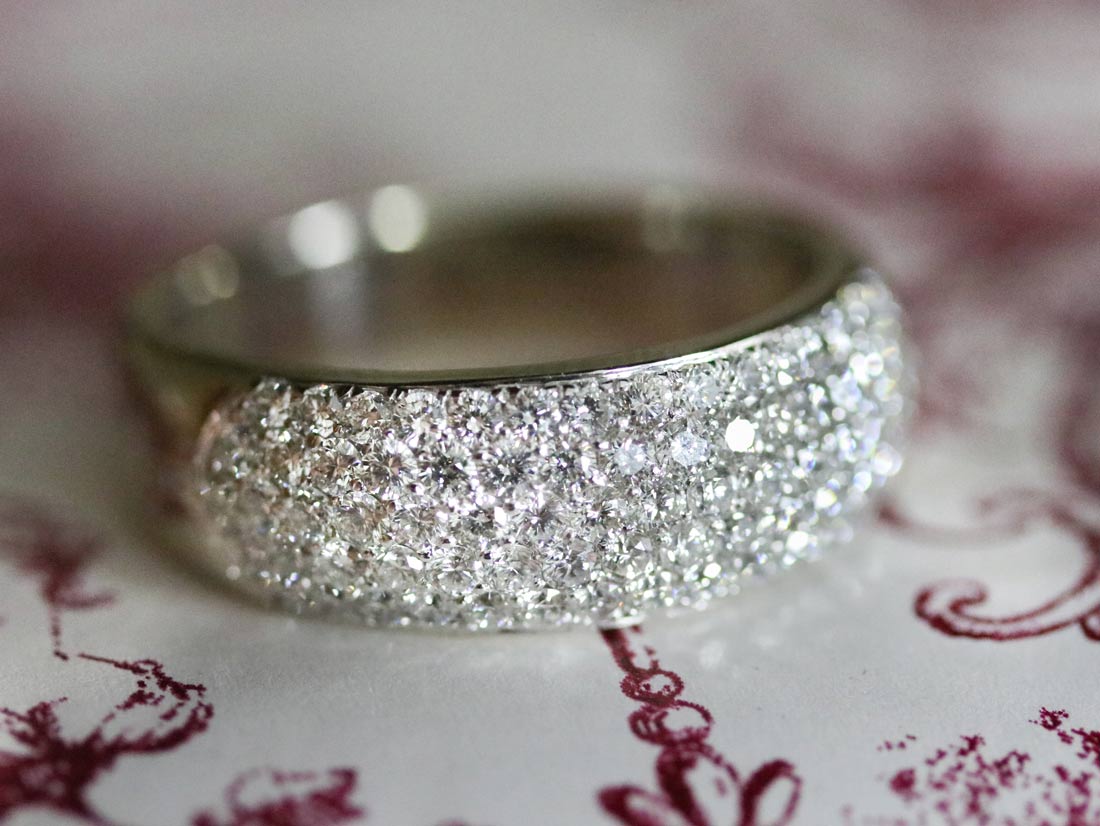
Pavé settings are all about showcasing the diamonds. Often clustered in multiple rows, you will see very little metal around the gems, and instead get the effect of lots of glitter and sparkle. Because the diamonds are so exposed, some pavé settings are not as secure as other wedding band settings. You will have to keep an eye on whether any gems are starting to get loose to avoid losing them. If you wish to wear your wedding band everyday and you work with your hands, a pavé set diamond wedding band may not be the best choice. However, if style and glamour is what you seek, look no further!
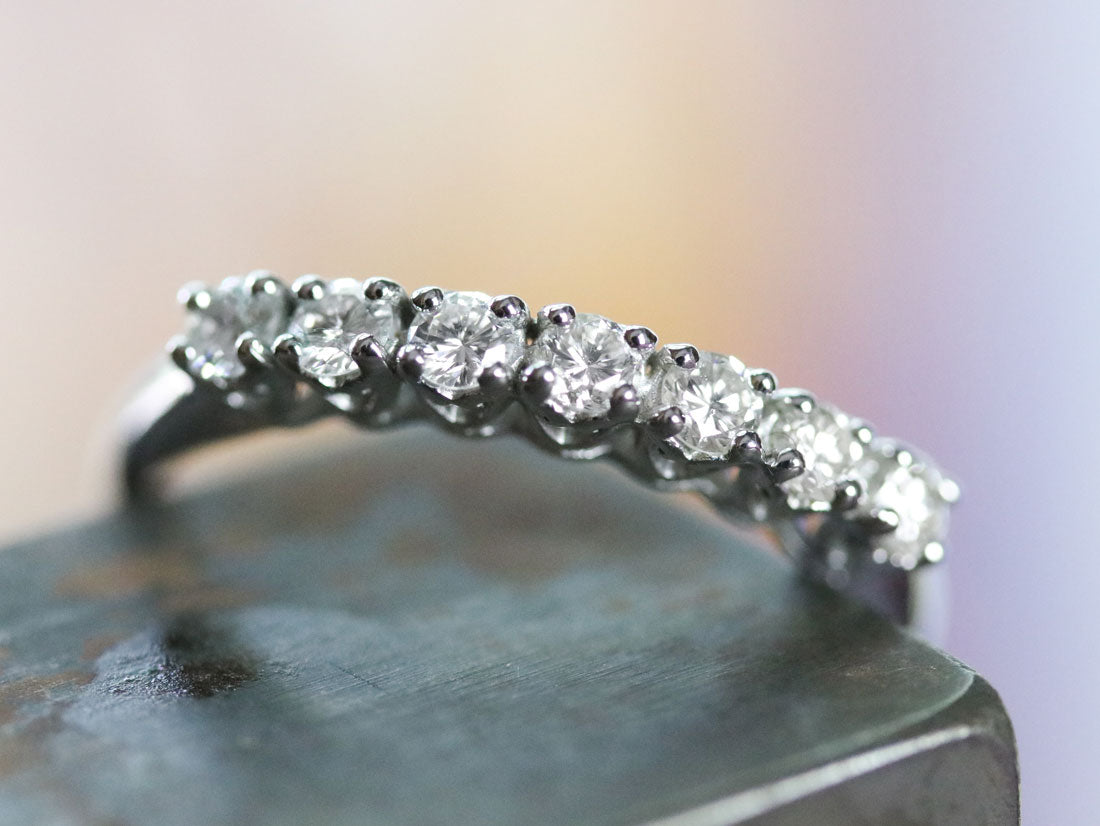
Prong settings are classic in style, with each diamond in the wedding band held in place by individual or shared prongs. As is the case with all prong settings, prong set diamond wedding bands are designed to let lots of light flow through the stones. Although the prongs are less protective than other settings, they are easy to maintain and repair, as they can be adjusted singularly without worrying about affecting the overall design of the ring. If you are looking for a design that shows off as much of the gems as possible, prong set diamond wedding bands are a great choice.
An eternity band is a wedding band in which the diamonds go all the way around the ring, creating a continuous row of sparkle. Many people like eternity bands because even if the ring spins around your finger, it always looks good and the diamonds are always on display. An important thing to keep in mind is that eternity bands are very difficult to resize, so if you find that your finger fluctuates in size as the seasons change, you don’t have a lot of options to make it more comfortable. Also, bear in mind that since that diamonds will go underneath your finger, as well as on top, it is easier to chip or damage the stones during everyday wear.

Diamond enhancer bands, or guard bands, serve the dual purpose of adding extra oomph to your solitaire or engagement ring, while also adding another level of protection. There are all sorts of shapes and designs of enhancer bands, and some even look nice worn on their own. Enhancers that have both a top and bottom band will offer the most protection, and tend to have a substantial design.

Now that you know all the different kinds of diamond wedding band settings, you can pick the perfect ring to match your lifestyle and taste. Shop our selection of antique, vintage, and modern diamond wedding bands and see these different styles in action!
Related Article: Engagement Ring Settings You Should Know
Related Article: The Big Guide To Vintage Engagement Rings
September 17, 2021 2 min read
July 26, 2021 4 min read
June 29, 2021 9 min read
Get 10% off your next purchase!